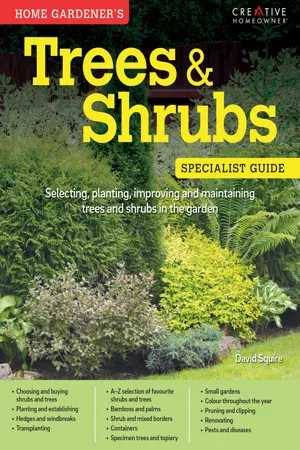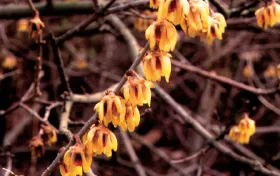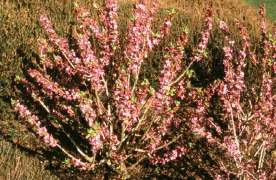![]()
Winter-flowering shrubs & trees
Winter-flowering shrubs and trees are some of the easiest plants to look after, and once established require little attention. In addition, most of them need very little pruning. They can be planted in ‘winter gardens’ or in ‘mixed borders’ with herbaceous and other plants. Wherever they are planted, ensure that an all-weather path passes close to them, so that they can be readily admired without the need to cross a border or frost-covered lawn.
Are these plants difficult to grow?
ADDED WINTER COLOUR
As well as winter-flowering plants for this season, remember the value of evergreen foliage. Consider using variegated evergreen shrubs as backgrounds; they provide a wide range of shapes and sizes.
Additionally, variegated evergreen climbers such as Hedera colchica ‘Sulphur Heart’ will soon smother the ground with colour. This eye-catching Ivy has large leaves that are boldly marked with an irregular central, yellow splash. Even though it has a vigorous, sprawling and spreading habit, it can be kept in check by pruning off any long shoots in spring or autumn.
There are also many varieties of Calluna vulgaris (Heather) which have attractive foliage – see page 32 for a description of Calluna vulgaris ‘Gold Haze’.
This colour- and shape-contrasting medley of shrubs will create interest during the winter season, and will continue to do so for many years.
Chimonanthus praecox
Winter Sweet (UK/USA)
Also known as Chimonanthus fragrans, this bushy, deciduous shrub bears spicy-scented, cup-shaped flowers with waxy, yellow petals and purple centres from mid- to late winter. The flowers are borne on bare stems.
Soil and position: well-drained soil and a warm position; preferably, in cold areas, plant against a sheltered wall.
Pruning: little pruning is needed, other than thinning out congested and old shoots in spring, after the flowers fade.
1.8–2.4 m (6–8 ft) 1.8–2.4 m (6–8 ft) Cornus mas
Cornelian Cherry (UK/USA)
Hardy, densely branched and twiggy deciduous shrub with small clusters of golden-yellow flowers borne on naked stems from mid-winter to spring. Occasionally, shrubs bear edible, red, semi-translucent fruits. During autumn, the leaves turn rich reddish-purple.
Soil and position: fertile, moisture-retentive but well-drained soil in full sun.
Pruning: no regular pruning is needed, other than cutting out damaged shoots in spring.
2.4–3.6 m (8–12 ft) 1.8–3 m (6–10 ft) Daphne mezereum
February Daphne (USA)
Mezereon (UK/USA)
Hardy, deciduous shrub with purple-red, fragrant flowers from late winter to spring. They cluster on stems and are followed in autumn by poisonous, scarlet berries. There is a white-flowered form.
Soil and position: moisture-retentive but well-drained soil in full sun or light shade. It is suitable for chalky soils.
Pruning: no regular pruning is needed, other than cutting out damaged or misplaced shoots in spring.
90 cm–1.5 m (3–5 ft) 60–90 cm (2–3 ft) Erica carnea
Erica (UK) Heather (UK)
Winter Heather (USA)
Hardy, prostrate or low-growing evergreen shrub with terminal clusters of white, pink, red or purple...











